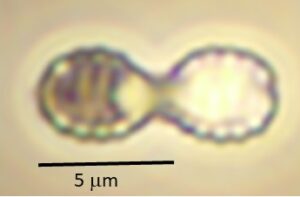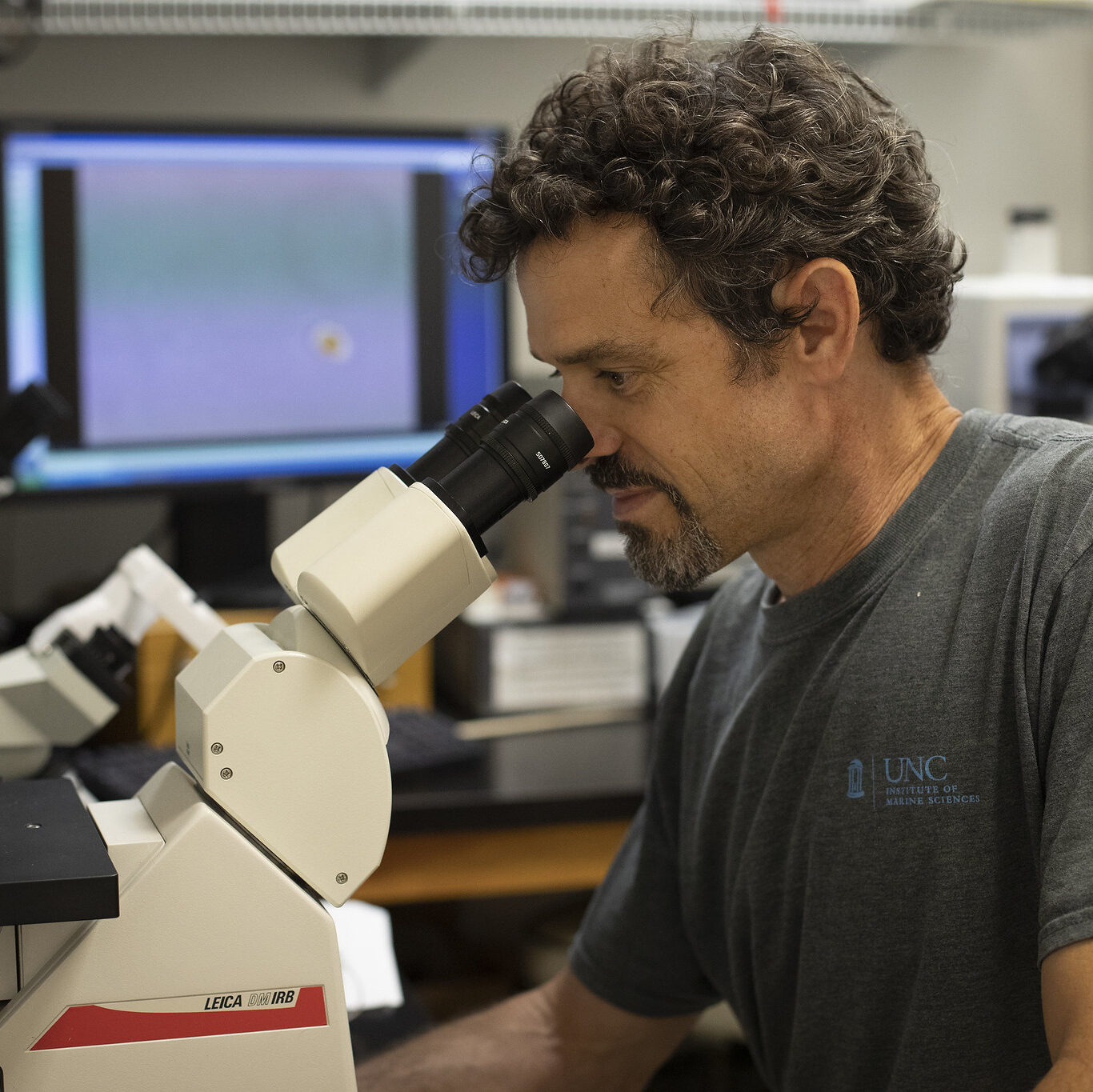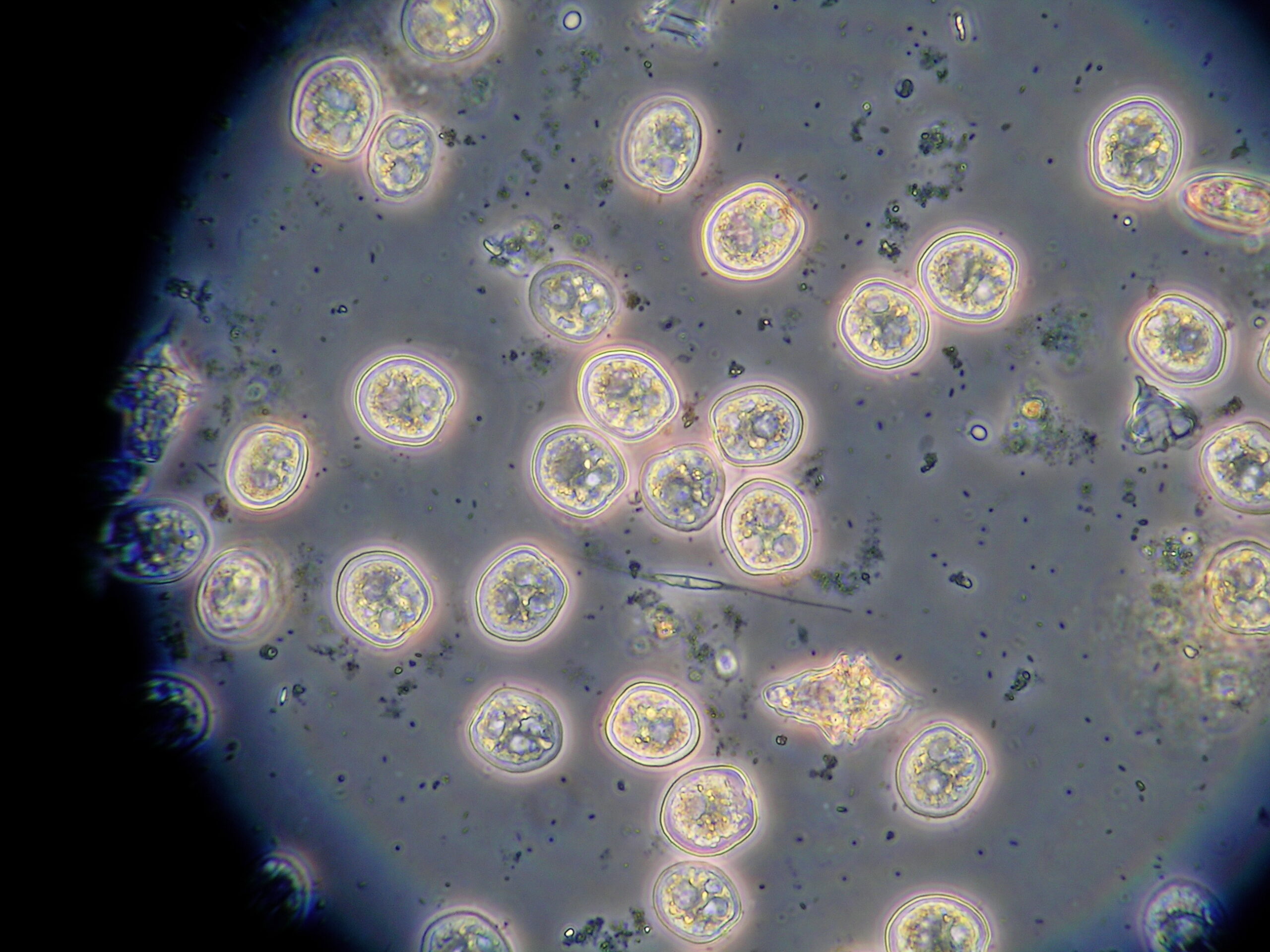Honors thesis student Luke Townsend discovers an important link in estuarine microbial food webs
Luke’s honors thesis project is investigating the role of a small, (~ 4 micron diameter), poorly studied, heterotrophic amoeba, Paulinella ovalis, in estuarine microbial food webs. Previously, P. ovalis had been mistakenly identified as a phytoplankton which fortunately has resulted in its abundances being documented by government environmental agencies (heterotrophic protist abundances aren’t often considered important enough to monitor). From those records, we know that it is often the most abundant eukaryote present in the brackish estuarine waters of the U.S. East Coast. There is also one paper that shows it is in fact a small amoeba that lives in a grenade shaped silica shell and it eats small picoplanktonic cyanobacteria. Prior to Luke’s work, that was the extent of our knowledge of this super-abundant protist. Luke spent fall of 2020 measuring growth rates of P. ovalis and calculating its potential grazing pressure on picoplanktonic cyanobacteria in the Neuse River Estuary. His work showed that P. ovalis may be capable of removing a significant fraction (40-160%) of the picoplankton biomass each day and may form a significant link between the microbial food web and higher trophic levels. 

